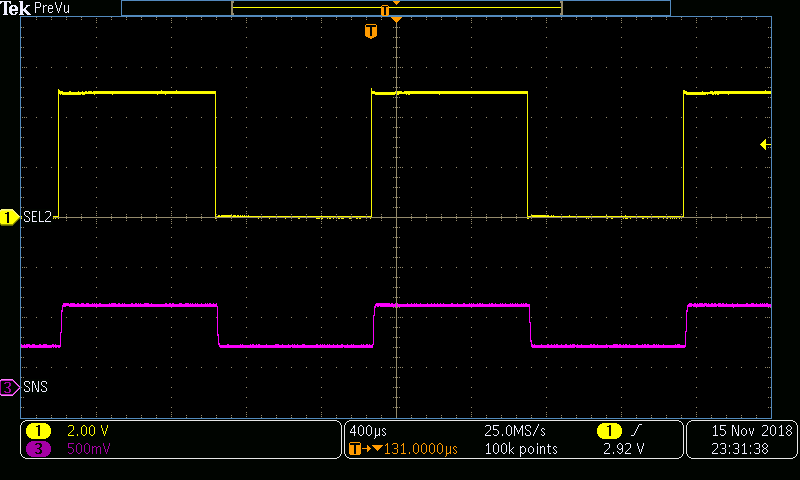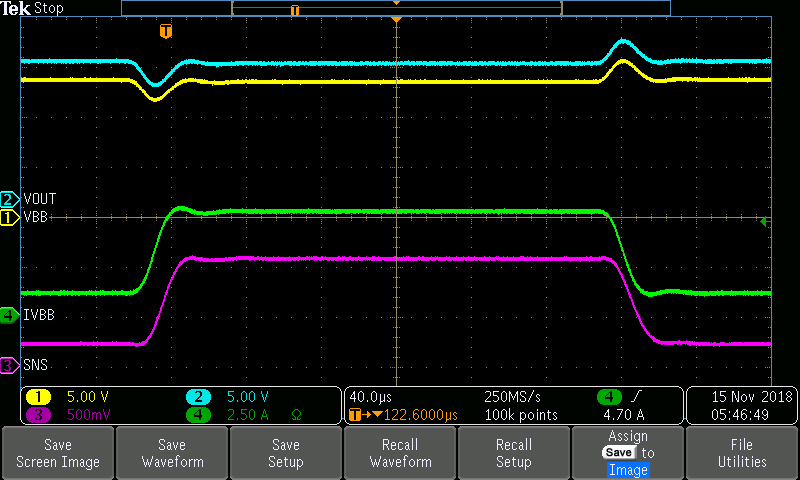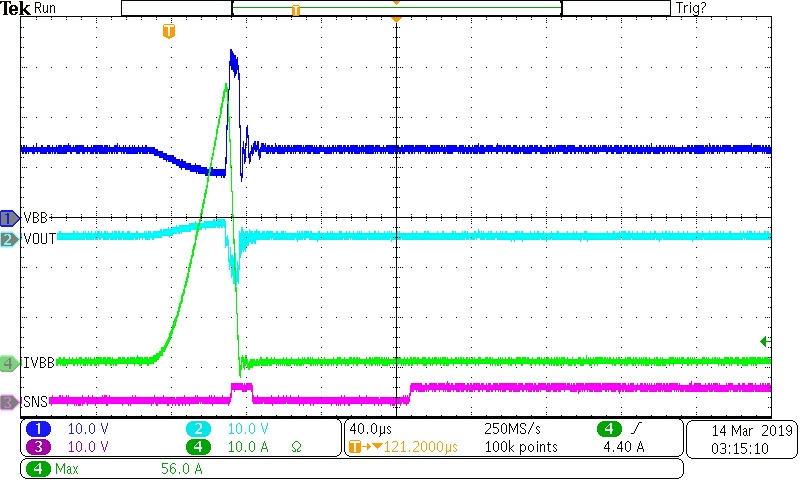ZHCSJN4C February 2018 – February 2020 TPS2HB16-Q1
PRODUCTION DATA.
- 1 特性
- 2 应用
- 3 说明
- 4 修订历史记录
- 5 Device Comparison Table
- 6 Pin Configuration and Functions
- 7 Specifications
- 8 Parameter Measurement Information
-
9 Detailed Description
- 9.1 Overview
- 9.2 Functional Block Diagram
- 9.3
Feature Description
- 9.3.1 Protection Mechanisms
- 9.3.2 Fault Event – Timing Diagrams - Version F
- 9.3.3 Diagnostic Mechanisms
- 9.4 Device Functional Modes
- 10Application and Implementation
- 11Power Supply Recommendations
- 12Layout
- 13器件和文档支持
- 14机械、封装和可订购信息
10.3.3 Application Curves
When the device receives a rising edge on the ENx pulse the output will turn on as shown in Figure 53. After the turn-on delay time, the device VOUT goes to the VBB supply and begins outputting the steady state resistive current.
 Figure 53. Turn On Waveform
Figure 53. Turn On Waveform When the device turns off on a falling edge of ENx, the channel IOUT will go to zero and the VOUT will drop to zero as well as shown in Figure 54.
 Figure 54. Turn-Off Waveform
Figure 54. Turn-Off Waveform While enabled, it is important to measure the output current through both channels. Figure 55 shows this behavior when toggling the SELx pins. The image shows that when SEL2 toggles high to low, the SNS pin toggles between representing IOUT1 and IOUT2. When SEL2 is low SNS represents IOUT1 and when SEL2 is high SNS represents IOUT2. This image shows that channel 2 is currently outputting twice the output current as channel 1.
 Figure 55. Toggling Between CH1 and CH2 Current Measurement
Figure 55. Toggling Between CH1 and CH2 Current Measurement Figure 56 shows the SNS current behavior when there is a load step. The image shows the output current temporarily increase from 1 A to 5 A and then return to 1 A. In this situation, the output current is accurately modeled throughout the pulse by the voltage on the SNS pin allowing for accurate diagnostics.
 Figure 56. SNS Settling Time
Figure 56. SNS Settling Time If the output of the TPS2HB16-Q1 is short-circuited, the device will protect the system from failure. shows the device turning off the output at a set current limit when the output is short circuited. (Note: shows a case with a higher RILIM than calculated in this example, so the current limit is higher than ).
 Figure 57. TPS2HB16B-Q1 Short Circuit Waveform
Figure 57. TPS2HB16B-Q1 Short Circuit Waveform